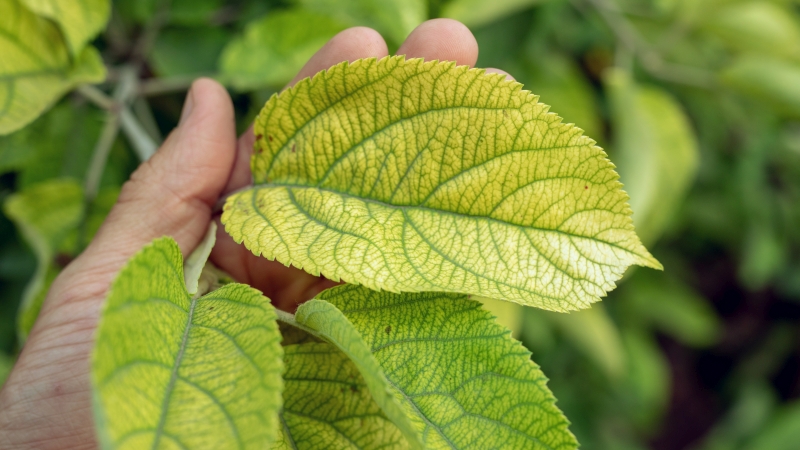Florida Goes Back To The Well To Protect Water
 Last year’s rainy season put Lake Okeechobee and its surrounding estuaries back in the national media spotlight. Whether it is managing stormwater in times of abundance, availability in times of drought, or maintaining its quality, water is a defining issue in the state.
Last year’s rainy season put Lake Okeechobee and its surrounding estuaries back in the national media spotlight. Whether it is managing stormwater in times of abundance, availability in times of drought, or maintaining its quality, water is a defining issue in the state.
The fish kills and loss of other marine life in estuaries that connect to Lake Okeechobee made for media headlines. The nature of the coverage pointed the finger at discharges from the lake to lower levels and to relieve pressure on its aged dike. By extension agriculture was viewed by some as a suspect in the ecological aftermath of the unusually wet rainy season. While agriculture has a role to play, the dealings with water around the lake are far more complex than blaming at any one entity or body of water.
While the water releases from the lake were blamed for the majority of problems, stats from the South Florida Water Management District tell a different story. From the period of June to Mid-October, if you consider the total releases to the St. Lucie Estuary, 45% of the total cumulative water was from Lake Okeechobee. The remaining 55% of the total came from local watersheds. On the west side, releases into the Caloosahatchee River comprised of 37% from the lake with 63% coming from local runoff. Many of those local watersheds are populated by housing, illustrating the urban impact on the disaster that unfolded during the rainy season.
“Certainly, Lake Okeechobee and the associated estuaries St. Lucie and Caloosahatchee, which is collectively known as the Northern Everglades, is an area where we have focused our staff and monetary resources for the past decade or so,” says Rich Budell, director of agricultural water policy for FDACS. “It is a very complex issue that is bigger than just water quality issues. It also is about supply and availability and how we optimize the management of the lake to meet all its uses. Agriculture is a large component of this, but there are multiple players in the discussion of how we manage this system for the benefit of man, the environment, and economy.”
There is a large focus now on rehabilitation of the dikes around the lake, so more water can be held and ultimately not discharged. There are seven of 10 projects under way that will create more than 6,500 acres of new stormwater treatment areas and 116,000 acre-feet of additional water storage around the lake.
“One thing people must understand is when Mother Nature inserts herself into the scenario and it continues to rain, the lake will get full and discharges are going to occur,” says Budell. “There is no solution to eliminate discharges from the lake. There are things we can do to store more water north of the lake, like restoring the Kissimmee River and rehydrating its flood plain. We also are using private lands to store water. These are all great tools to minimize discharges from the lake, but we will never eliminate them.”
 Statewide Issue
Statewide Issue
While the majority of attention in the past two decades has focused on Lake Okeechobee and Everglades restoration, water is a statewide issue. That fact has become a calling card of Commissioner of Agriculture Adam Putnam.
“I believe Florida’s water policy must be flexible,” says Putnam. “Two years ago, we were in a drought. Last summer, Lake Okeechobee was at its max capacity. Our policy must be flexible so we can adapt to the current conditions.
“The policy must be comprehensive. Every region of Florida is in crisis. Our water policy cannot solve South Florida’s problems and neglect the crisis in Apalachicola. And, we cannot shift focus with every new campaign to save this or save that. We must focus on Florida’s future with a long-term policy.”
 Year Of Water
Year Of Water
Some have opined that the coming Florida legislative session will be dubbed the “Year Of Water.” A number of lawmakers have indicated interest in seeking funding for new and existing projects. Much of the interest in focusing the session on water was driven by environmental havoc surrounding Lake Okeechobee and its estuaries last year.
Lawmakers and regulators are confident more monies will be available as state coffers are growing with an improving economy. “Water will play a significant role in the upcoming session,” says Putnam. “Among the many proposals to address Florida’s water crisis, I’ve asked the legislature for $26 million to fund nutrient reduction projects, water retention projects, and expansion of agricultural BMPs.”
The legislative leadership likely will pursue a “springs” bill in the coming session. The law would focus primarily on the Big Bend area, which is populated with hundreds of spring watersheds and under intense pressure from nutrition loading from agriculture and urban areas. In addition, lawmakers will be looking at Lake Okeechobee and the St. Lucie Estuary.
Agriculture A Proactive Player
Agriculture often has been portrayed as the villain in the water debate. While it has had its problems in the past, growers have worked hard to preserve water quality and supply over the past decades. In fact, urban stakeholders could learn from steps agriculture has taken to improve its management of water.
“There is less water used today by Florida agriculture than in the recent past, yet we have increased the quality and quantity of what we produce,” says Budell. “If you look at the agriculture water use curves from the water management districts, ag use have been flat or even decreased for the past 20 years. That is a testament to our growers’ endorsement and embracing of the conservation ethic.”
While ag use remains flat, urban consumption is on a steady increase. Urban domestic consumption recently overtook agriculture as the major user of water in Florida. Urban use is projected to grow by 30% by 2030, while ag remains flat.
Budell says agriculture has been able to curtail water use by the adoption of new technology and more efficient irrigation, reuse water, and capturing of stormwater and irrigation water for reuse.
“Agriculture has been a huge player in the Southwest Florida Water Management Districts FARMS program, which helps growers identify ways to capture water from storms or irrigation for reuse,” he says. “Over the past decade, this cost-share program has offset 20 million gallons per day of groundwater use.”
FDACS also has taken action to help growers conserve water through its 11 Mobile Irrigation Labs across the state. At no cost to the grower, the Department will evaluate irrigation systems and make recommendations on how to make them more efficient.
“With the irrigation labs, we have helped save about 50 million gallons per day over the past decade or so,” says Budell. “Between those programs, that is about 70 million gallons per day. That is a sizable amount of water that agriculture is saving in those two programs alone.”
Florida’s BMPs program, operated by FDACS, is the most recognized agricultural water program in the state. About half of the state’s privately owned agricultural lands are now enrolled in the program and covers most major sectors of production including citrus and specialty crops.
“I think what is really telling is when you look at traditional ag numbers, there are about 1.8 million acres in the state that are irrigated,” says Budell. “Those acres are where the water is used and the vast amount of fertilizer is applied. We believe that we have about 90% of those acres enrolled in BMPs. So those lands are the most intensively managed and engaged with what the best science tells us you can do to manage water use and preserve its quality.”
Where are the BMPs headed in the future? “We will continue to focus on more and better technology to provide growers access to real-time information to make better informed decisions on irrigation and fertilizer use,” says Budell. “A recent example of this is our push to cost-share the installation of weather stations on farms and an app for smartphones or desktops to access information or control irrigation remotely.”










